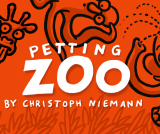
At the South African conference Design Indaba, one of the most talked-about presentations was from Ben Terrett, head of design for the UK’s Government Digital Service.
Terrett was showing, for an international audience, his department’s work on Government digital hub gov.uk, which launched in beta form almost exactly a year ago.
Since then, the gov.uk service has brought in 14 of the 24 Government ministerial departments, including the Foreign Office and the Ministry of Defence, and is starting to fold in more than 300 other Government departments and organisations, such as the Driving Standards Agency and HM Revenue and Customs.
Gov.uk is becoming a one-stop shop for Government services in the UK. Want to register for a birth certificate? Find out when the next bank holiday is? Apply for UK citizenship? You should visit gov.uk. Replacing Directgov, Businesslink and department websites, the site is bringing content and services from more than 2000 websites into one.
As a design project, it demonstrates clarity, simplicity and a key focus on the user. When the beta launched last year, Terrett told us the new site "had to allow people to get in and out very quickly. People might visit a Government site twice a year, so there’s no time to be familiar with navigation".
And a year in, this mammoth task is starting to make waves internationally. As well as the well-deserved accolades (Ideo’s Tim Brown says, "The UK is leading the way in using design to create a singular digital service for its citizens", while open-source guru Tim O’Reilly says the work is the most important piece of user interface guidance since the original Mac principles in the 1980s) there is that highest form of flattery – imitation.
But this was always the intention. One of the most important aspects of GDS’s work is openness. This goes beyond publishing their design principles online (Do less, Iterate. Then iterate again) to publishing the Gov.uk code on Github.
One of the first to emulate the gov.uk model is Honolulu Answers, which, alongside advice about driving licenses and employment, offers answers to some more exotic questions – "What do I do if I see a shark?", "What do I do about wild roosters?".
Closer to home, the Department for Culture, Media and Sport rebuilt its intranet using Gov.uk principles, but without GDS even knowing about it – "this is what we want", says Terrett.
Fittingly for a project that is starting to become an international showcase for British design, Terrett has always (rather ambitiously) placed the gov.uk project in the context of Great British public service projects from the past – Kenneth Grange’s Intercity 125, Calvert & Kinneir’s road signage et al.
So much so, that Terrett even worked to bring Margaret Calvert into the project. An introduction from mutual friends saw Calvert become an "unofficial mentor/fierce critic" of the project, says Terrett.
Strongly opinionated – apparently her feedback on an early iteration of bank holidays page, which used a vibrant pink colour, was "that page makes me feel sick" – Calvert’s influence led to design decisions such as setting the entire website in one typeface in one size. Even the typeface used, New Transport, is an update of the Transport type used by Calvert & Kinneir on the road signs.
But two of the most important principles on which gov.uk has been built are user-centricity ("a relentless focus on the user", says Terrett) and openness. It is this second that is perhaps the most remarkable aspect of this project. GDS isn’t just convincing Government to do design, it’s forcing it to open up as well – before being brought into the gov.uk fold, Government departments have to meet the Digital by Default standards.
Having been live for just over 12 months, gov.uk is now taking its place in the fabric of day-to-day life. I’ve used it to update my driving licence, pay my council tax and track down contact details for a variety of departmental press officers.
A strong contender for the Design Museum’s Designs of the Year Award, as well as being emulated worldwide, 2013 could be the year Gov.uk takes its place in the long line of key UK public service design projects.









